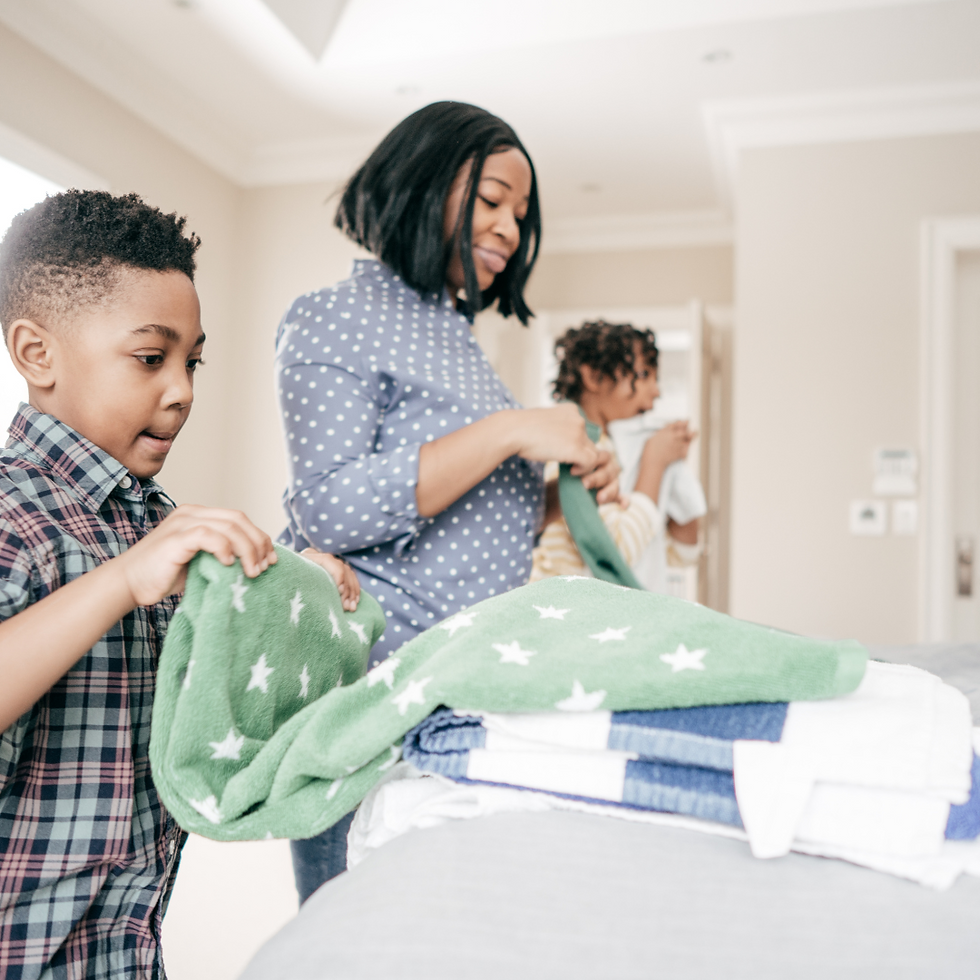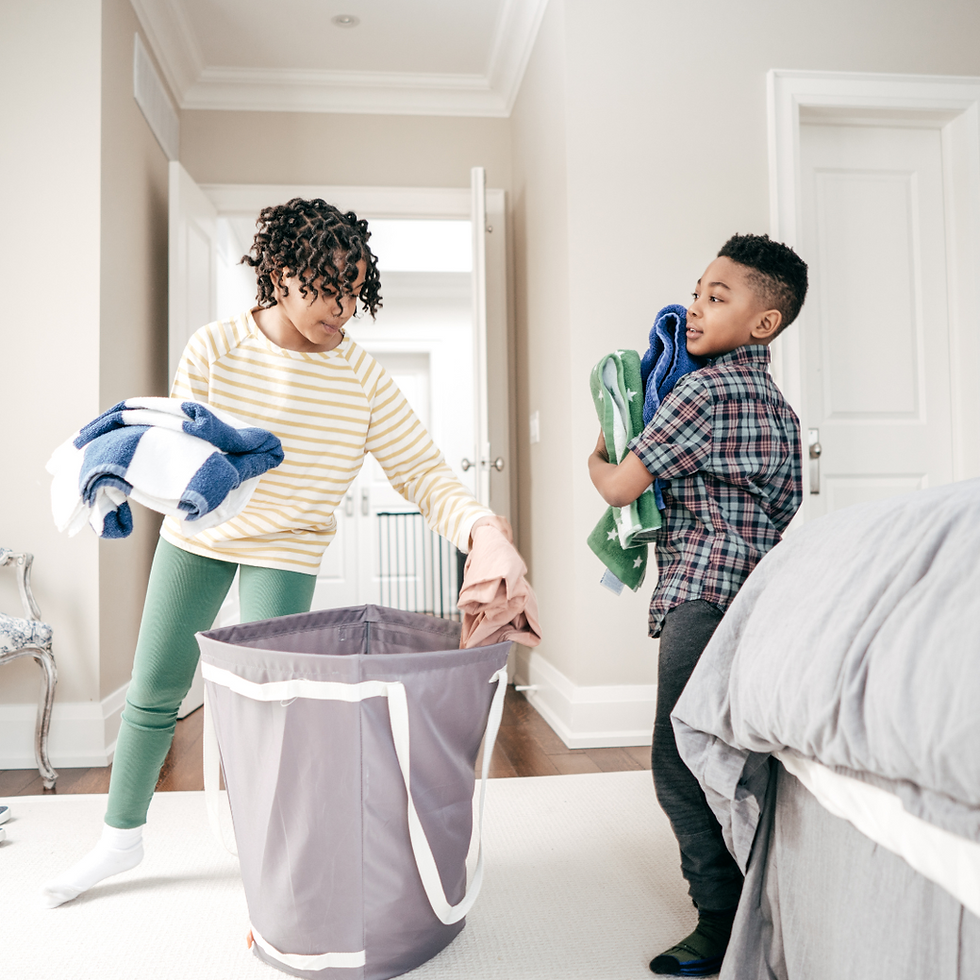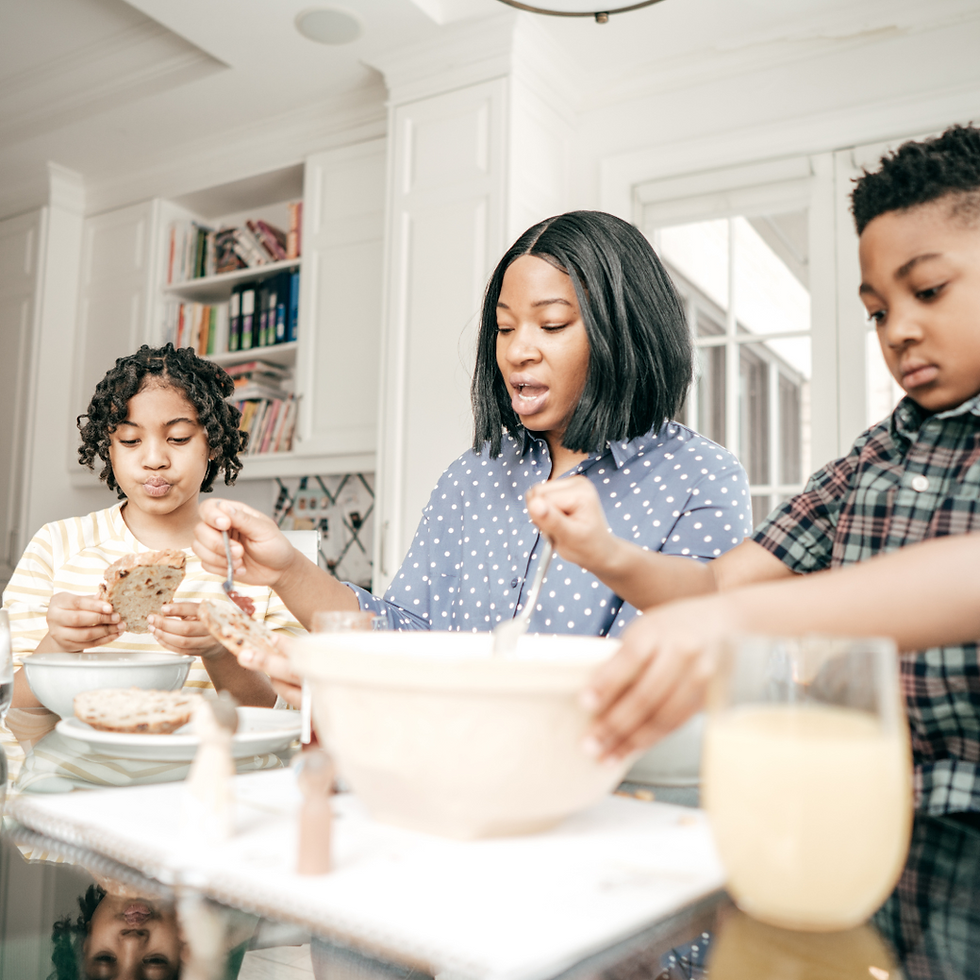Raising Organized Kids Starts with You: 5 Habits + Systems That Actually Stick
- themodernsteward
- 12 minutes ago
- 5 min read
Because tidy homes aren’t built in a day—they’re modeled one moment at a time

If you’ve ever said, “I just want my kids to clean up without being told,”—you’re not alone.
Working parents are juggling a lot—careers, meals, school drop-offs, doctor’s appointments, bedtime routines. Add “household manager” to the list, and it’s no wonder so many of us feel stretched thin.
At The Modern Steward, we work with families every day who say the same thing:
👉 “I don’t mind keeping the house organized… I just wish I wasn’t the only one doing it.”
Here’s the truth: Organized kids don’t happen by accident. They happen by example.
And the good news? The habits you model now will stick—especially when they’re built on systems that work for your family.
Let’s walk through the habits and home systems that help your child build real-life organization skills (no chore charts required—unless you want them).
1. Set the Standard (Without the Pressure)

Kids don’t need perfection. But they do need a pattern.
They learn by observing—so if they see you returning items to their home, resetting spaces before bed, or pausing to say “let’s take five minutes and tidy up”—they begin to internalize what “normal” looks like.
One of the most powerful phrases you can use:
🗣️ “In our family, we take care of our things.”
It’s not a threat. It’s not a demand. It’s just a standard—and when spoken calmly, it reinforces the idea that order is part of your family’s culture, not just a chore.
Client Insight:
Parents often share that their own burnout around cleaning is something they unknowingly pass on. If you dread tidying up, your kids will associate it with negative energy too. But if it’s approached like brushing teeth—routine, no big deal—they’ll respond with less resistance over time.
2. Create Clean Routines That Work for Your Actual Life

Let’s be honest: The internet is full of “systems” that don’t account for real life.
What your home needs is a routine that matches your household dynamic today.
That means:
Assigning small, age-appropriate responsibilities
Creating consistency without rigidity
Choosing moments of reset that work for your schedule
💡 Sunday evening family resets, 10-minute bedroom tidies before bed, or one family task after school—these are all small routines that create big impact over time.
If your child is older, include them in the decision-making. Ask:
👉 “Which part of your room feels the hardest to keep up with?”
👉 “How do you want this space to feel when you wake up?”
It gives them a voice, and a sense of ownership—two things that dramatically increase follow-through.
Check out this list of chores for children from the American Academy Child & and Adolescent Psychiatry.
3. Organize With (Not Just For) Your Kids

Here’s the secret to systems that stick: you build them with your child, not around them.
We’ve seen clients who had beautifully labeled bins, smartly folded drawers—and kids who had no idea where anything belonged. That’s because the systems weren’t built collaboratively.
👀 Instead of organizing in silence, narrate as you go:
“Let’s put your favorite toys on this shelf—so they’re easy to grab.”
“Your socks will live in this drawer, because you reach it better.”
This shared language becomes a teaching moment—one that pays off the next time they go to clean up on their own.
As the old adage goes divide and conquer… that’s not necessarily dividing chores equally but playing to each other's strengths.
4. Make It Feel Good, Not Just Look Good

We talk a lot about aesthetics. But what about emotion?
Cluttered environments affect kids the same way they affect adults—creating stress, distraction, and overwhelm. We’re just often too busy to name it.
Help your child notice how it feels to reset a space:
Is it easier to find your favorite toy when everything’s in place?
Do you sleep better when your room feels calm and tidy?
Does it feel good to walk into a space that’s “done”?
These moments build internal motivation—not just external compliance.
5. Teach Time, Not Just Tasks

One of the biggest challenges working parents face is time management—not just for themselves, but for their kids.
If your child has no concept of how long it takes to clean up, they’ll either avoid it or drag it out. But when you break it down, they begin to understand how manageable it can be.
✅ Try this: Set a 5-minute timer and call it “reset time.”
Make it a family event. Everyone tackles one area. The focus isn’t perfection—it’s practice.
And over time, those 5 minutes become a foundation for self-starting, personal pride, and real-world time skills.
6. Don't Wait Until It's a Problem to Begin Raising Organized Kids with Habits and Systems
One of our clients said it best:
“I didn’t need a Pinterest-perfect house—I just needed a system that made me feel like I wasn’t always 10 steps behind.”
That’s what we help families do every day.
Whether your kids are still learning to put their shoes away or navigating the chaos of teenage clutter—there’s a system that will work for your season. You don’t have to figure it out alone.
Bonus: What About Tweens and Teens?
Let’s be honest—tweens and teens can be the hardest to “organize,” not just their spaces… but their preferences, personalities, and priorities. But that’s exactly why your consistency and clarity matter most during this stage.
Not sure if I’ve mentioned it recently, but I’m a boy mama and bonus mom through and through. When Larry and I decided to blend our families, we suddenly had two 14-year-olds and one 7-year-old under the same roof—each with their own unique take on organization.
Here’s what I’ve learned:
Our oldest is pretty regimented by nature, but he’s also creative—so while he likes structure, he resists anything that feels too rigid. He wants the freedom to change things up—but you can always count on him to get it done.
Our middle child (bless him, lol) needs a little more support in the organizational systems department. He thrives when routines are predictable and the expectations are clear. On the flipside his spontaneous disposition means he’s the first one to jump into action with the unexpected occurs.
Our youngest is what I lovingly call our “pen-to-paper” kid. If it’s not on the calendar, (well in advance) it’s not happening. And honestly? He keeps us all accountable.
What’s the point?
No two kids organize—or respond to structure—the same way. But all kids benefit from guidance, consistency, and systems that are flexible enough to grow with them.
So whether you’re raising a minimalist, a creative tornado, or a checklist-lover, there’s room for all of it. Start with clear expectations. Layer in visual or digital supports. And remember: you’re teaching life skills, not aiming for Pinterest-perfect.
Final Thoughts: You’re Already Planting Seeds 🌱
If you’re reading this, you’re already doing the work of raising organized kids with habits and systems—modeling presence, intention, and care. The truth is, kids aren’t born organized. But they’re watching. And with the right mix of structure, flexibility, and support, they’ll rise to the occasion.
Not sure where to start? I’m just a message away. Let’s talk about what would make your home feel lighter this season.
Chat soon,
Kimberly
.png)



Comentarios